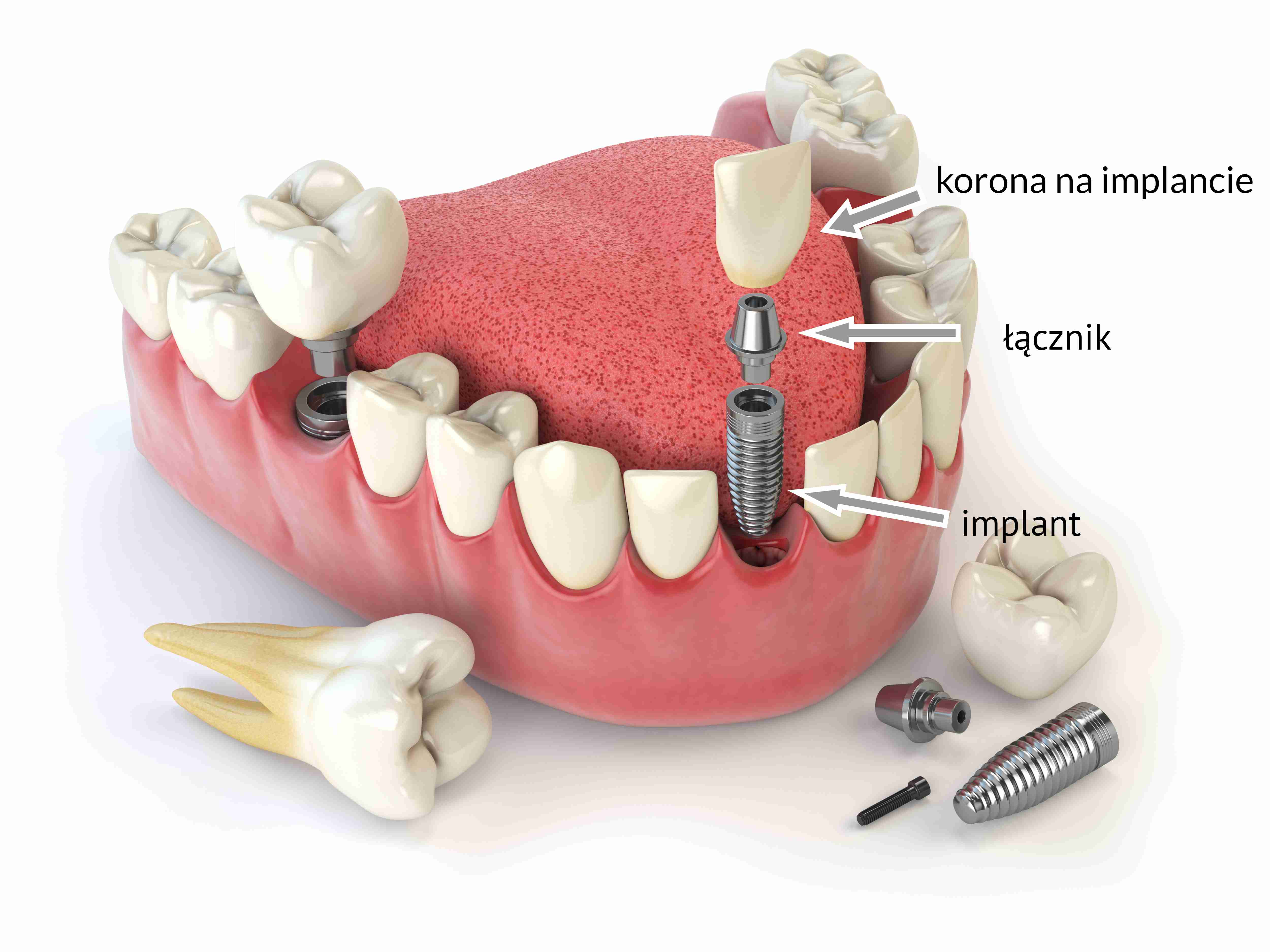
Nowadays, the most modern method of restoring lost teeth is the prosthetic reconstruction on implants. The basic element that allows this type of reconstruction is the implant itself, i.e. the type of implant in the shape of a screw, which is inserted into the jawbone.
What is an implant?
Simply put, an implant is the equivalent of the root of the lost tooth, on which the prosthetic part - a single crown, a bridge or an overdenture - is fixed, depending on the missing teeth.
Can the metal from which the implant is made cause an allergic reaction?
The keys to success in implant prosthetics are the unique properties of the material the implant is made of. A breakthrough discovery of the phenomenon of osseointegration, i.e. the physical connection between bone and the surface of the titanium, allowed for the use this material in the vast majority of implant systems. The body treats the titanium implant as a fragment of itself, not only by not rejecting the material, but also creating neuron connections responsible for the emergence of the osseoperception phenomenon – the ability to "sense" the structure and the food consumed and the force that arises during biting on the reconstructed teeth, similarly as in natural teeth. This makes the patient gradually almost forget about having this type of restoration and normal daily functioning is the same as with natural dentition.
I already have an implant inserted. What's next?
The implant itself would be worthless if it did not have a prosthetic part, protruding above the gingiva and responsible for function and aesthetics. After the period of osseointegration when the implant becomes fused with the bone, which takes about 3 - 4 months, the prosthetic part is installed on an intraosseous implant.
In the simplest procedure, when rebuilding a single tooth, it can be a crown, which does not significantly differ from the "ordinary" kind made on your own prepared tooth, apart from some technical differences.
Similarly, with a larger quantity of teeth missing, bridges are used in order to limit the number of necessary implants. For example, a restoration replacing four missing teeth can be a four-point bridge that can be placed on two implants (i.e. screws inserted into the bone).
For edentulous full denture users, two implants in the mandible and four implants in the maxilla may be placed, on which the overdenture will be inserted in order to improve comfort. This is the simplest solution that can be modified, depending on the specific clinical situation, even to a twelve-point bridge that restores the teeth from tooth number "six" to "six", based usually on six implants.
Therefore, dental arch reconstruction with implants opens up a huge number of possibilities, from replacing a single tooth to rehabilitating patients with edentulism.
